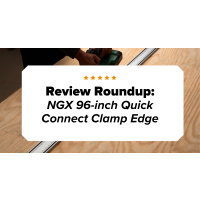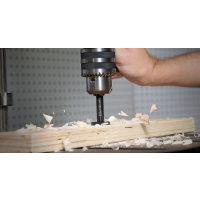You know when you make a cut and you’re left with a fuzzy edge, or your blade just takes entire chips out of your material?
We’ve all been there, and it sucks.
It can happen at any moment and no matter how much we’ve done to eliminate it, it always hurts. But why does it happen?
To put it simply, when we cut wood we’re breaking the natural interwoven fibers of the wood that create its structure. Think of the wood grain. Now, by supporting the grain, these interwoven fibers, at the point where our blade is cutting, we can eliminate tear-out.
There are a couple really easy ways to do this.
Method 1: Painter’s Tape
Probably the most basic and inexpensive way to eliminate tear-out is with painter’s tape.
If you’re handsawing dovetails or doing similar work, simply wrap the end of the timber with the tape and then mark your cuts as you normally would. If you’re making a longer cut with a power saw, just put the tape down where you want to cut and draw your line.
With handsaws and short power saw cuts, it’s pretty easy to see your line and control what is happening. It can be more challenging on longer cuts though, so we don’t recommend it for breaking down full sheets of plywood. Even so, there is no better feeling than removing the tape to expose clean, crisp edges on your piece.
Method 2: Track Saw
Track saws are like regular straight edges with painter’s tape on the edge (although it’s obviously not painter’s tape — it just has a similar effect).
Generally track saws are very expensive, but an alternative that produces very similar results is a straight edge with a non-chip strip attached. This is because as your circular saw blade rotates, it rubs vertically on the non-chip strip to support the blade. At the same time, the non-chip strip holds the fibers of the wood down so they can’t move and result in tear-out.
BORA’s NGX Clamp EdgeTM System uses this non-chip strip design to help you get clean, crisp cuts every time. The non-chip strip easily attaches to the Clamp EdgeTM, and the saw plate creates a stable platform to help control your feed rate through the material.
Extra tip: Make sure you have a good circular saw blade. Most saws come with a starter blade, but these are usually lower quality, general use blades. It’s worth the investment to buy a better blade with more teeth so you reduce the risk of tear-out.
And that’s how you can get splinter-free cuts every time! Try one or both of these methods out and let us know in the comments how they worked for you.






